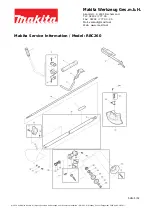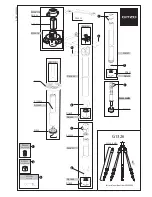
2
a
INSTRUCTIONS FOR USE
Indications for Use
The 3M™ Bair Hugger™ Temperature Management System is intended
to prevent and treat hypothermia. In addition, the temperature
management system can be used to provide patient thermal comfort
when conditions exist that may cause patients to become too warm or
too cold. The temperature management system can be used with adult
and pediatric patients.
• NOT STERILE.
Contraindications, Warnings and Cautions
Explanation of Signal Word Consequences
WARNING:
Indicates a hazardous situation which, if not avoided, could result in
death or serious injury.
CAUTION:
Indicates a hazardous situation which, if not avoided, could result in
minor or moderate injury.
Contraindications
CONTRAINDICATION: To reduce the risk of thermal injury:
• Do not apply heat to lower extremities during aortic cross-
clamping. Thermal injury may occur if heat is applied to
ischemic limbs.
WARNING: To reduce the potential for thermal injury:
• Do not treat patients with the Bair Hugger warming unit hose
alone. Always attach the hose to a Bair Hugger warming blanket
before providing warming therapy.
• Do not allow the patient to lie on the warming unit hose.
• Do not allow the warming unit hose to directly contact the
patient’s skin during warming therapy.
• Do not leave neonates, infants, children and other vulnerable
patient populations unattended during warming therapy.
• Do not leave patients with poor perfusion
unmonitored during prolonged warming therapy.
• Do not place the non-perforated side of the warming blanket
on the patient. Always place the perforated side (with the
small holes) directly on top of the patient in contact with the
patient’s skin.
• In the operating room, do not use this warming blanket with any
device other than a Bair Hugger 500 series, 700 series, or 675
warming unit.
• Do not use a Bair Hugger 200 series warming unit in the
operating room
• Do not use a Bair Hugger 800 series patient adjustable warming
unit with any Bair Hugger warming blanket.
• Do not continue warming therapy if the red Over-temp indicator
light illuminates and the alarm sounds. Unplug the warming unit
and contact a qualified service technician.
• Do not place patient securement device (i.e. safety strap or tape)
over the warming blanket.
• Do not place the warming blanket directly over a dispersive
electrode pad.
WARNING: To reduce the risk of patient injury or death due to
altered drug delivery:
• Do not use a warming blanket over transdermal
medication patches.
WARNING: To reduce the potential for injury due to interference
with ventilation:
• Do not allow the warming blanket or head drape to cover
the patient’s head or airway when the patient is not
mechanically vented.
WARNING: To reduce the potential for injury due to patient falls:
• Do not use a warming blanket to transfer or move the patient.
CAUTION: To reduce the risk of cross-contamination:
• This warming blanket is not sterile and is intended for single
patient use ONLY. Placing a sheet between the warming blanket
and the patient does not prevent contamination of the product.
CAUTION: To reduce the risk of fire:
• This product is classified as Class I Normal Flammability
as defined by the Consumer product Safety Commission’s
flammable fabric regulation, 16 CFR 1610. Follow standard safety
protocols when using high intensity heat sources.
CAUTION: To reduce the risk of thermal injury:
• Do not use if primary packaging has been previously opened or
is damaged
CAUTION: To reduce the risk of thermal injury, hyperthermia, or
hypothermia:
• 3M recommends continuously monitoring core temperature. In
the absence of continuous monitoring, monitor the temperature
of patients who are incapable of reacting, communicating and/or
who cannot sense temperature a minimum of every 15 minutes or
according to institutional protocol.
• Monitor cutaneous responses of patients who are incapable
of reacting, communicating and/or who cannot sense
temperature a minimum of every 15 minutes or according to
institutional protocol.
• Adjust air temperature or discontinue therapy when the
therapeutic goal is reached, if elevated temperatures are
recorded or if there is an adverse cutaneous response under the
warming blanket.
Directions for Use
1. Place the perforated side of the 3M™ Bair Hugger™ warming
blanket (the side with small holes) directly on top of the patient in
contact with the patient’s skin (see Figure A).
2. Where applicable, remove the backing from the adhesive tape
strip and adhere the warming blanket to the patient (see Figure B).
This, together with good surgical draping practice, helps to prevent
warmed air from flowing towards the surgical site.
Warning: Do not place patient securement device (i.e. safety strap or
tape) over the warming blanket.
Warning: Do not place the warming blanket directly over a dispersive
electrode pad.
Warning: do not treat patients with the Bair Hugger warming unit
hose alone. Always attach the hose to a Bair Hugger warming blanket
before providing warming therapy.
3. Insert the end of the Bair Hugger warming unit hose in the hose
port (see Figure C). Use a twisting motion to ensure a snug fit.
A visual marker is located around the mid-section of the hose
end to guide the depth of hose insertion. Support hose to ensure
secure attachment.
NOTE: See special considerations for Bair Hugger blankets
shown below.
4. Select the desired temperature setting on the warming unit to
initiate warming therapy. (See the Operator’s Manual for your
specific warming unit model)
Caution: Patient Monitoring Recommendations:
• 3M recommends continuously monitoring core temperature. In
the absence of continuous monitoring, monitor the temperature
of patients who are incapable of reacting, communicating and/or
who cannot sense temperature a minimum of every 15 minutes or
according to institutional protocol.
• Monitor cutaneous responses of patients who are incapable of
reacting, communicating and/or who cannot sense temperature
a minimum of every 15 minutes or according to institutional
protocol.
• Adjust air temperature or discontinue therapy when the
therapeutic goal is reached, if elevated temperatures are
recorded or if there is an adverse cutaneous response under the
warming blanket.
5. Based on the warming unit model utilized, turn the unit off or to
standby mode to discontinue warming therapy. Disconnect the
warming unit hose from the blanket and discard the warming blanket
per hospital policy.
A
B
C


































